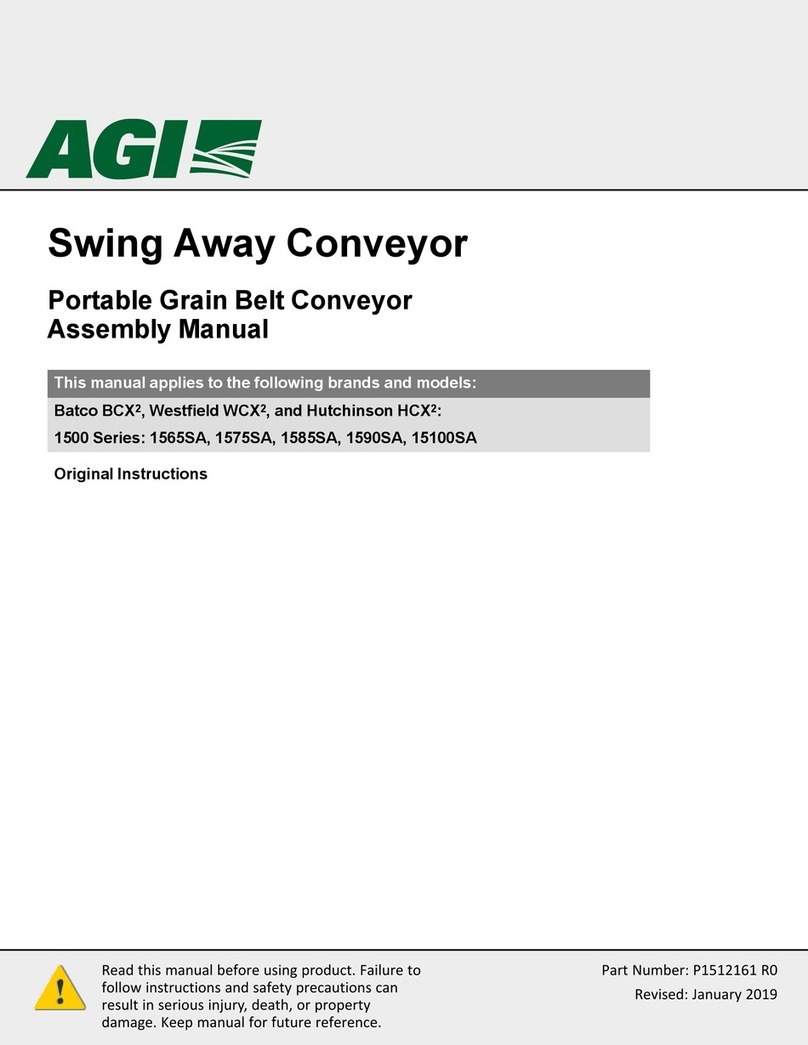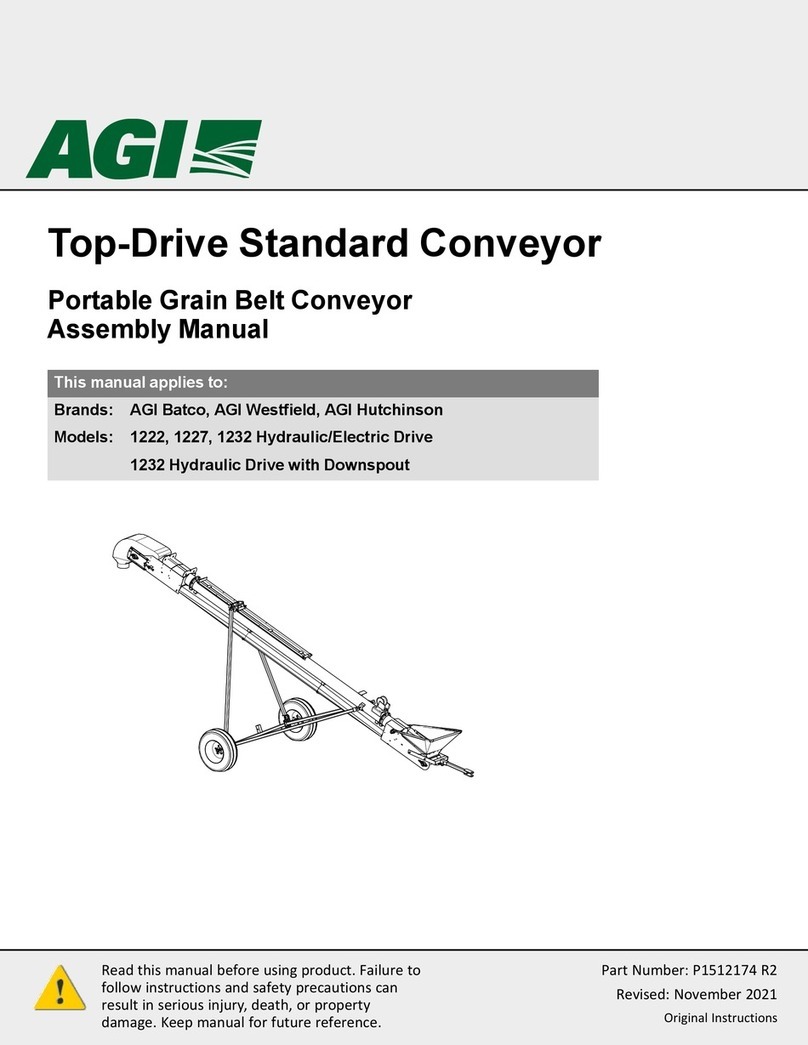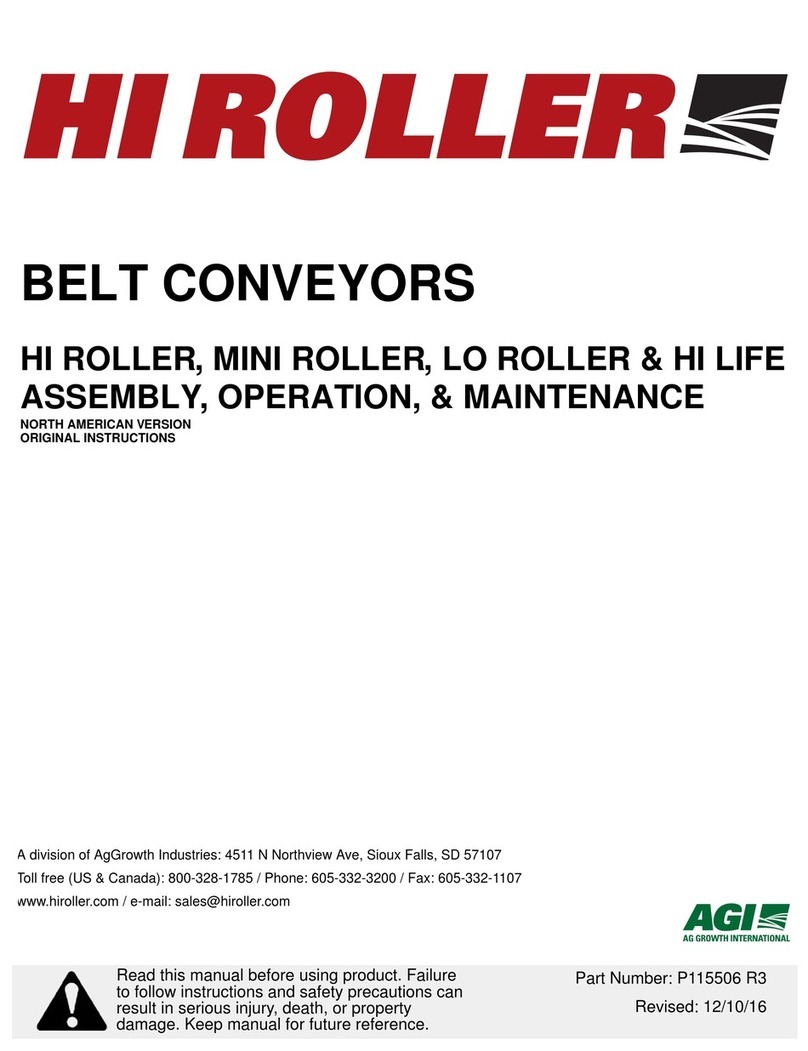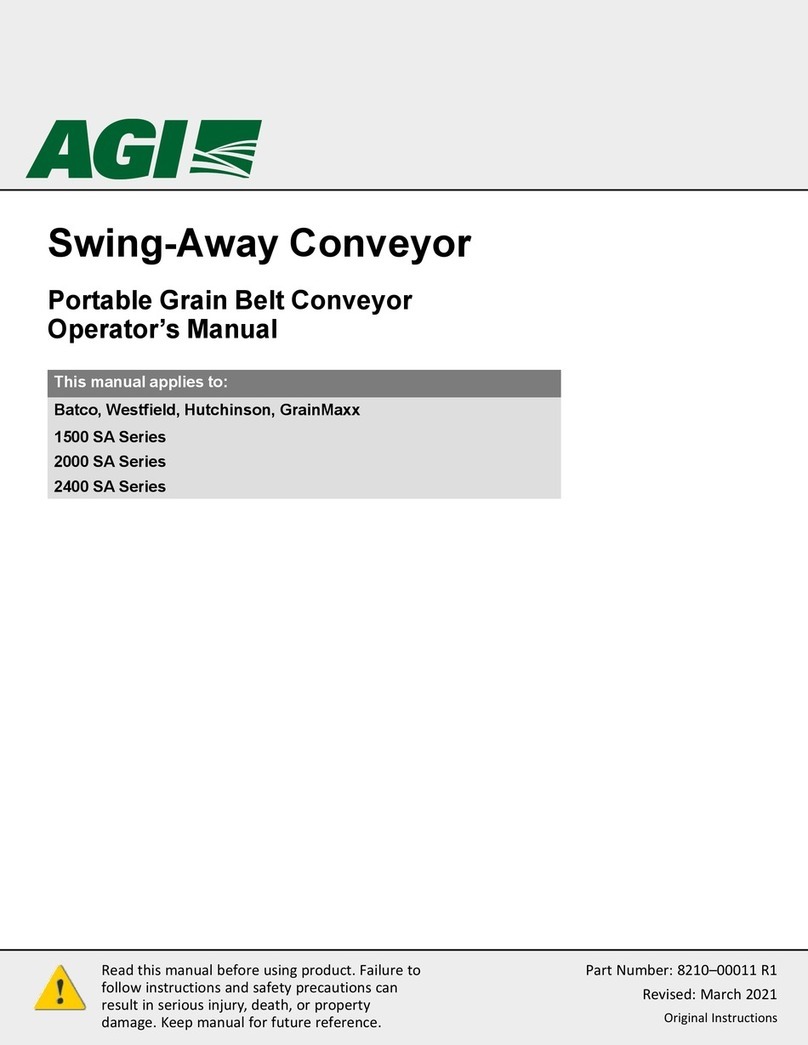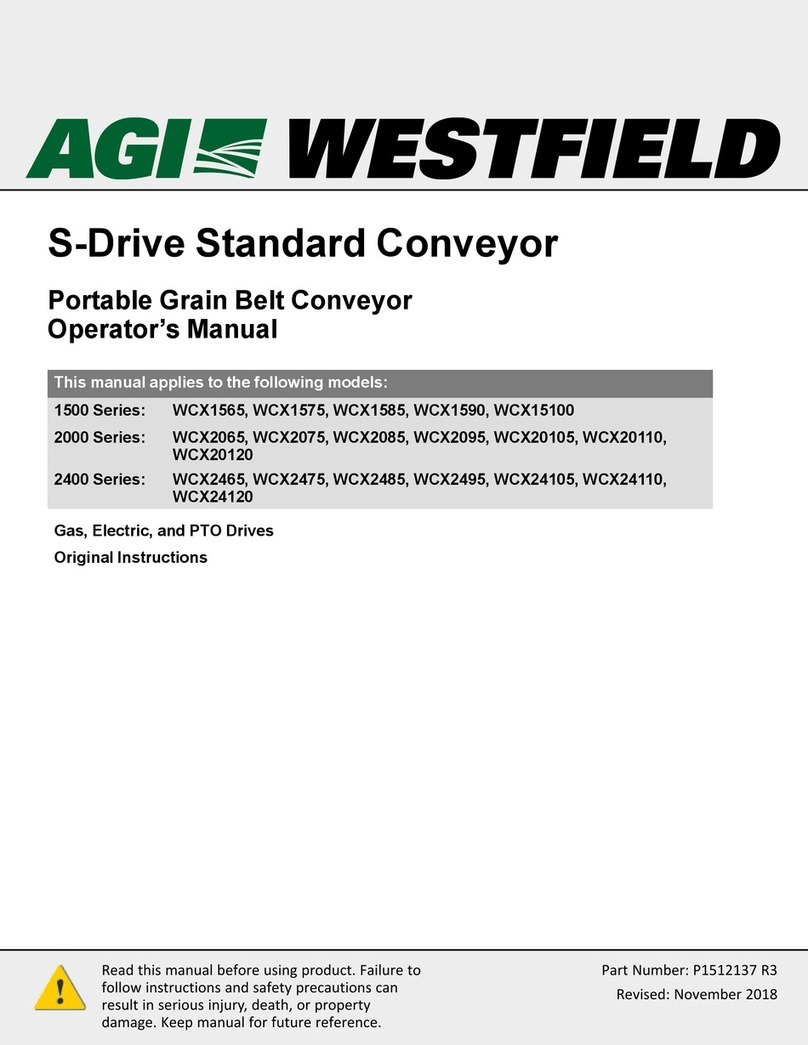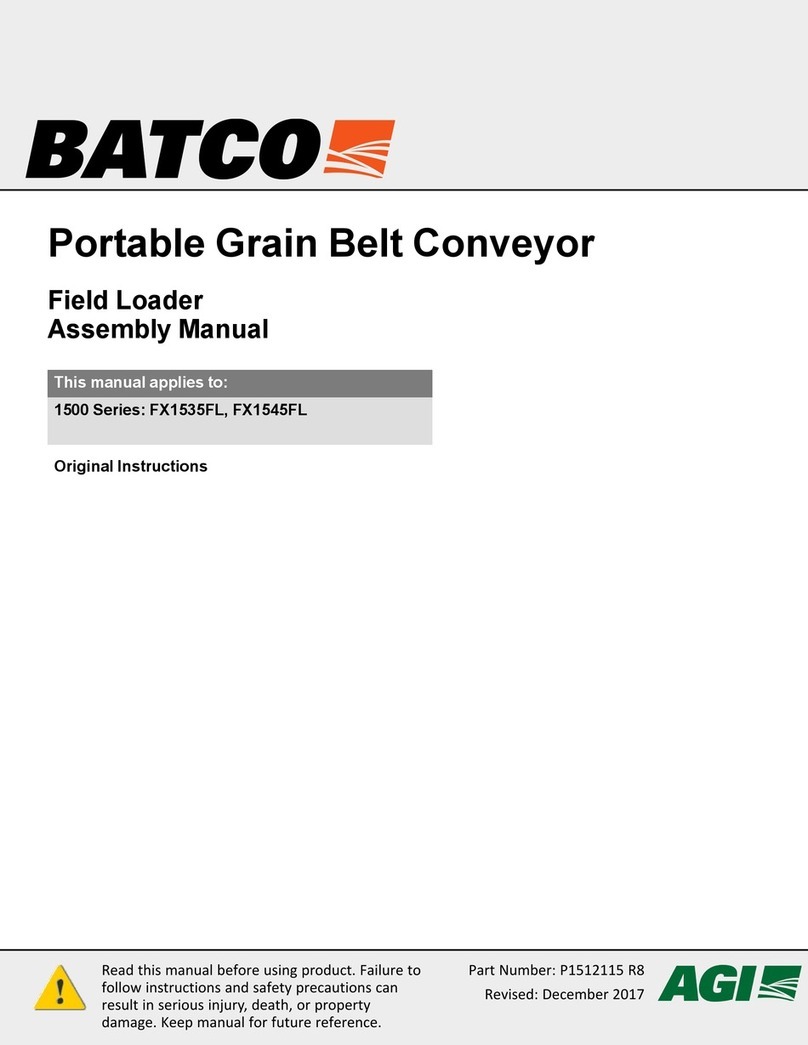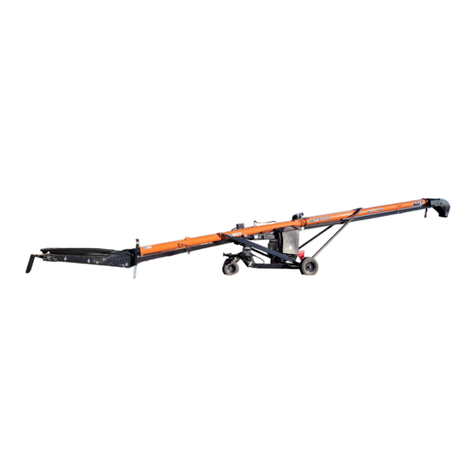
DRAG CONVEYORS
8210-30002 R0 3
CONTENTS
1. Introduction ............................................................................................................................................ 5
1.1 Serial Number Location............................................................................................................. 5
1.2 Intended Use ............................................................................................................................. 5
2. Safety....................................................................................................................................................... 6
2.1 Safety Alert Symbol and Signal Words...................................................................................... 6
2.2 General Safety Information....................................................................................................... 6
2.3 Chain Conveyor Safety .............................................................................................................. 6
2.4 Torque Arm Safety .................................................................................................................... 7
2.5 Rotating Parts Safety................................................................................................................. 7
2.6 Combustible Dust ...................................................................................................................... 7
2.7 Ladder Safety............................................................................................................................. 8
2.8 Fall Protection System Safety.................................................................................................... 8
2.9 Platform Safety.......................................................................................................................... 8
2.10 Drives and Lockout Safety....................................................................................................... 9
2.10.1 Electric Motor Safety................................................................................................ 9
2.11 Personal Protective Equipment............................................................................................... 9
2.12 Safety Equipment .................................................................................................................. 10
2.13 Safety Decals ......................................................................................................................... 10
2.13.1 Decal Installation/Replacement............................................................................. 10
2.13.2 Safety Decal Locations and Details ........................................................................ 10
3. Features................................................................................................................................................. 13
4. Site Preparation .................................................................................................................................... 17
4.1 Site Layout ............................................................................................................................... 17
4.2 Foundation .............................................................................................................................. 17
4.3 Supporting Structures ............................................................................................................. 17
4.4 Inlet Applications..................................................................................................................... 19
4.5 Location of Spouting and Dust Control................................................................................... 20
4.6 Electrical Requirements, Controls, and Devices ..................................................................... 20
5. Pre-Assembly ........................................................................................................................................ 22
5.1 Approval Drawing.................................................................................................................... 22
5.2 Before Unloading the Shipment ............................................................................................. 22
5.3 Unload the Shipment .............................................................................................................. 22
5.4 Product Storage....................................................................................................................... 23
5.5 Before You Begin..................................................................................................................... 23
6. Assembly ............................................................................................................................................... 25
6.1 Assembly Safety ...................................................................................................................... 25
6.2 Lifting and Moving the Conveyor............................................................................................ 25
6.3 Connecting the Head, Tail, and Trough Sections .................................................................... 27
6.4 Installing the Head Drive......................................................................................................... 31
6.5 Installing the Head Drive Support ........................................................................................... 34
6.6 Installing the Conveyor Chain ................................................................................................ 34
6.7 Installing Trough Covers.......................................................................................................... 37
6.8 Installing Slack Chain Sensor ................................................................................................... 38
6.9 Tensioning the Conveyor Chain .............................................................................................. 43
6.10 Installing Other Components ................................................................................................ 43
